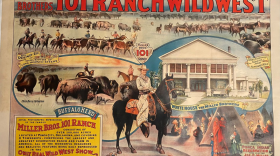In the early part of the Twentieth Century, child labor was common. Professor J.M. Gillette from the University of North Dakota addressed child labor in his sociology class. On this date in 1915, Gillette said it wasn’t unique to big cities. He said that North Dakota also had to face up to the problem of child labor.
Gillette was chairman of North Dakota’s Child Labor Committee and a member of the national Advisory Committee on Child Labor. He said that many states had addressed the problem, and it had been under consideration by Congress for ten years. He said national regulation was important.
In 1910 almost two million children between the ages of ten and fifteen were employed. Over half worked in agriculture. Some people said child labor was positive as it reinforced a strong work ethic and helped children support their families.
Gillette said the negative impact was far greater than the positive. Children who worked were kept out of school, and they often dropped out at an early age. States with a high rate of child labor also had a high rate of illiteracy. Almost fifty percent of children in Mississippi worked, and the illiteracy rate there was twenty-two percent. The rates in North Dakota were quite a bit lower. The percentage of children working in the state was seven percent, and the illiteracy rate was three percent. But Gillette said the negative impact should not be overlooked. Children who worked were more likely to become involved in criminal pursuits and were more likely to be repeat offenders. They were exposed to adult activities such as smoking. They also had higher rates of medical problems like fatigue, anemia, and heart disease.
North Dakota had a law limiting child labor, but Gillette said it was defective. It limited child labor to sixty hours a week, but didn’t limit hours per day. Gillette said they shouldn’t work more than eight hours a day. He said a state labor commissioner should be named to oversee child labor. He urged North Dakota to be on the cutting edge of preventing children from being exploited by business.
North Dakota did proceed to create a labor commissioner position, and in a revision of the child labor laws in 1994, children were limited to 18 hours during the school year, and 40 hours when school was out.
Dakota Datebook written by Carole Butcher
Sources:
Washburn Leader. “Child Labor and North Dakota.” Washburn ND. 2/12/1915. Page 1.



